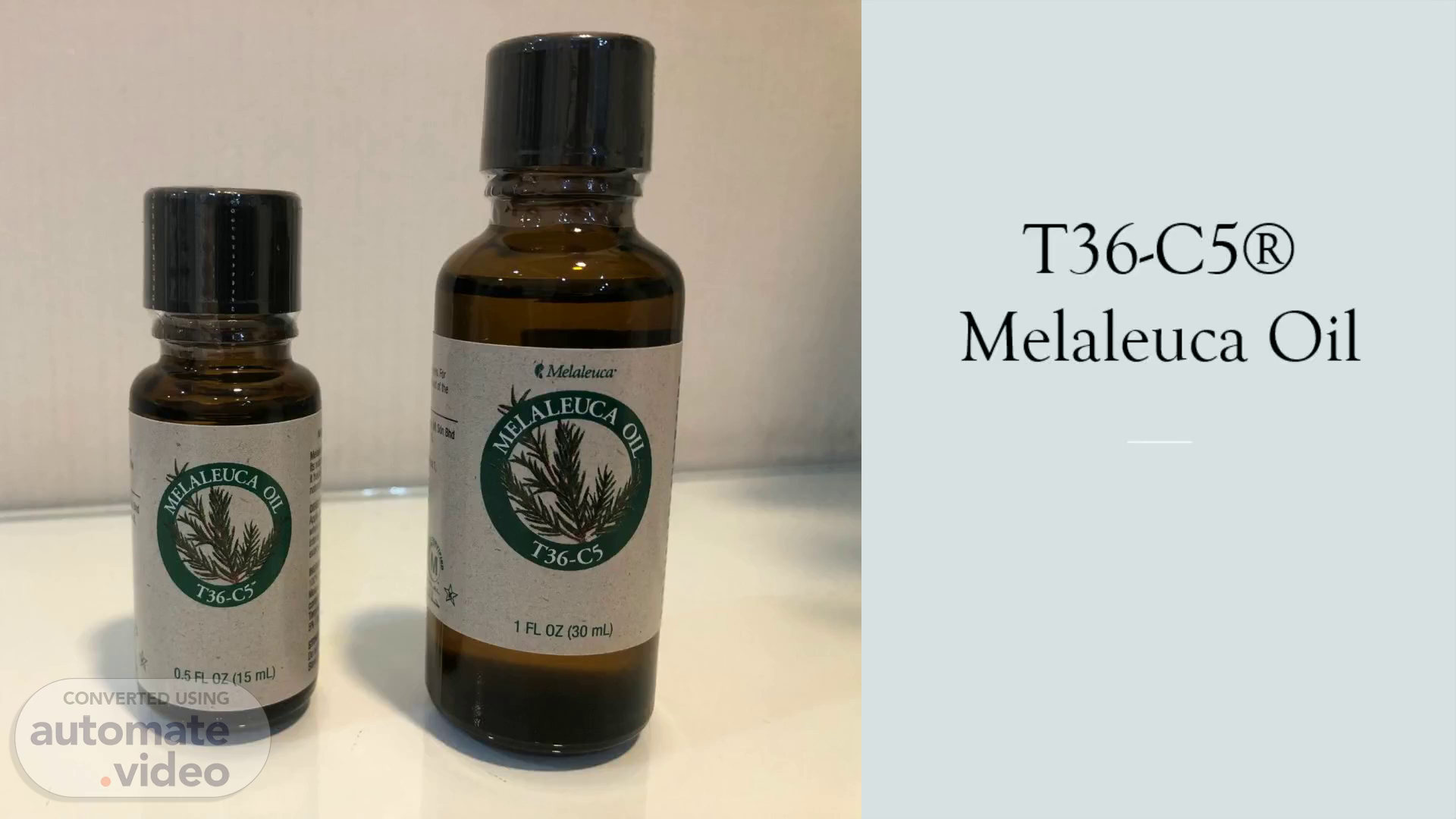
T36-C5® Melaleuca Oil
Scene 1 (0s)
[Audio] T36-C5® Melaleuca Oil. T36-C5® Melaleuca Oil.
Scene 2 (9s)
[Audio] A Melaleuca Oil Timeline When British explorer James Cook landed in southeast Australia in 1770, he observed local Aborigines brewing the " tea tree" leaves as a tea. In 1922, Australian chemist Arthur de Ramon Penfold brought new attention to the oil of Melaleuca alternifolia in a report to the Museum of Applied Arts and Sciences in Sydney. The report hailed tea tree oil as effective in dealing with a variety of ailments. The Australian government, recognizing the oil's ability to help wounds heal, commandeered the entire supply of tea tree oil for the war effort, and those involved in its production were exempted from military service..
Scene 3 (55s)
[Audio] Healing powers brought to the world In 1985, a young company called Melaleuca Inc. became the first to bring the healing, soothing powers of Melaleuca Oil to people all over the world..
Scene 4 (1m 11s)
[Audio] So many uses in such a small bottle. 1. Naturally Antiseptic - Helps reduce infection by cleansing the skin. 2. Soothing - Helps relieve stinging and itching from bites, minor wounds, irritated skin 3. Safely Penetrating - Quickly delivers soothing relief keep into source of the discomfort.
Scene 5 (1m 42s)
[Audio] 4. Non-caustic - No caustic or harmful chemical reactions 5. Effectively Solvent - Safely dissolves many different substances like gum, resins, and dirt 6. Pleasantly Aromatic - Refreshes the senses with a natural, pleasing scent..
Scene 6 (2m 9s)
[Audio] An oil like no other. T-what? T stands for terpinen- 4-ol. Terpinen-4- ol gives Melaleuca Oil its antiseptic powers. T36-C5 Melaleuca Oil is 36% terpinen-4-ol, exceeding the Australian quality standard of 30%. C-who? Cineole gives Melaleuca Oil its penetrating power. Too much cineole and the oil can be irritating. The "5" means that the oil is only 5% cineole—far stricter than the Australian quality standard, which allows 15% cineole..
Scene 7 (2m 58s)
[Audio] Thank You. Thank You. A picture containing text, grass, outdoor, sky Description automatically generated.